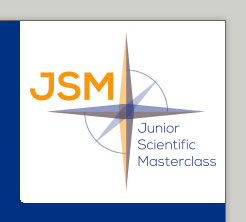Edit researchproject
In this email you'll find a link that you can use to edit the project on the website.
Only researchers that belong to the project can edit their project.
Please use the selectlist below to indicate which researcher you are. When you click the button 'Edit project', an email will be sent to the email of the selected researcher.
Project properties
| Title | Evaluation of the introduction of Minimally Invasive Radioguided Parathyroidectomy (MIRP) surgical treatment of primary hyperparathyroidism (PHPT) in Zorggroep Treant, ziekenhuislocatie Bethesda Hoogeveen |
|---|---|
| Keywords | Minimally invasive parathyroidectomy Primary Hyperparathyroidism |
| Researchers |
Dr. A.H. Brouwers Dr. J. de Boer Drs. R.W.F.R. van den Broek Drs. M. Dam |
| Nature of the research | Retrospective evaluation |
| Fields of study | surgery endocrinology nuclear medicine |
| Background / introduction |
|---|
|
Patients with symptomatic primary hyperparathyroidism (PHPT) should have parathyroid surgery to remove the cause of the parathyroid hormone (PTH) overproduction (1). PHPT is most commonly caused by single gland adenoma (75–85%). Multigland adenoma is the cause in a substantial proportion (two glands in 2–12% of cases, three glands in <1–2%, and four or more in <1–15%). Parathyroid carcinoma is a rare cause (~1%). Despite intensive use of several imaging techniques (Ultra-sound, Sestamibi scintigraphy, CT) preoperative localization is regularly unsuccessful or gives discordant results between techniques. Therefore, patients with negative imaging techniques are often not operated, and initially successfully operated patients may show persistent or recurrent hyperparathyroidism in a significant number of cases (up to 5%) (2). Minimal Invasive Radioguided parathyroidectomy (MIRD) (2-4) uses intraoperative Sestamibi measurements in which all the four (or more if pictured) parathyroid glands are sampled and ex-vivo measured for radioactivity content. Subsequently, only the gland(s) with increased radioactivity is/are removed. Since mid-2013, this operation method is used at Treant Zorggroep, hospital-location Bethesda (Hoogeveen), which is the only location in the Netherlands until now. The population of operated patients currently includes approximately 50 patients. These patients have had imaging prior to operation with Sestamibi scintigraphy in all cases and ultrasonography in most cases. |
| Research question / problem definition |
|---|
|
1. What is the success rate of this new operation? I.e., was it possible to measure an increased radioactivity and were there one ore more hyper functioning gland(s) removed? 2. Did the postoperative PTH and calcium levels normalize in the blood of the operated patients during a follow-up period of 2 years? 3. How do these operation results compare to preoperative imaging? 4. What is the number of active glands that were removed which were negative on imaging? |
| Workplan |
|---|
| Collection and analysis (5) of the findings of: preoperative imaging from patient records, intraoperative radioactivity measurements from operation reports, pathology results and relevant blood calcium and PTH measurements from the patient records. All these results are analyzed at the level of parathyroid localizations. |
| References |
|---|
|
1. Imaging techniques in parathyroid surgery for primary hyperparathyroidism. Mohebati A, Shaha AR Am J Otolaryngol. 2012;33:457-68 2. Abandoning Unilateral Parathyroidectomy: Why We Reversed Our Position after 15,000 Parathyroid Operations James Norman, MD, FACS, FACE, Jose Lopez, MD, FACS, Douglas Politz, MD, FACS, FACE J Am Coll Surg 2012 3. http://www.parathyroid.com/ 4. https://www.youtube.com/watch?v=xaTXVSmvEJI 5. https://castoredc.com/nl/good-clinical-practice/ |


